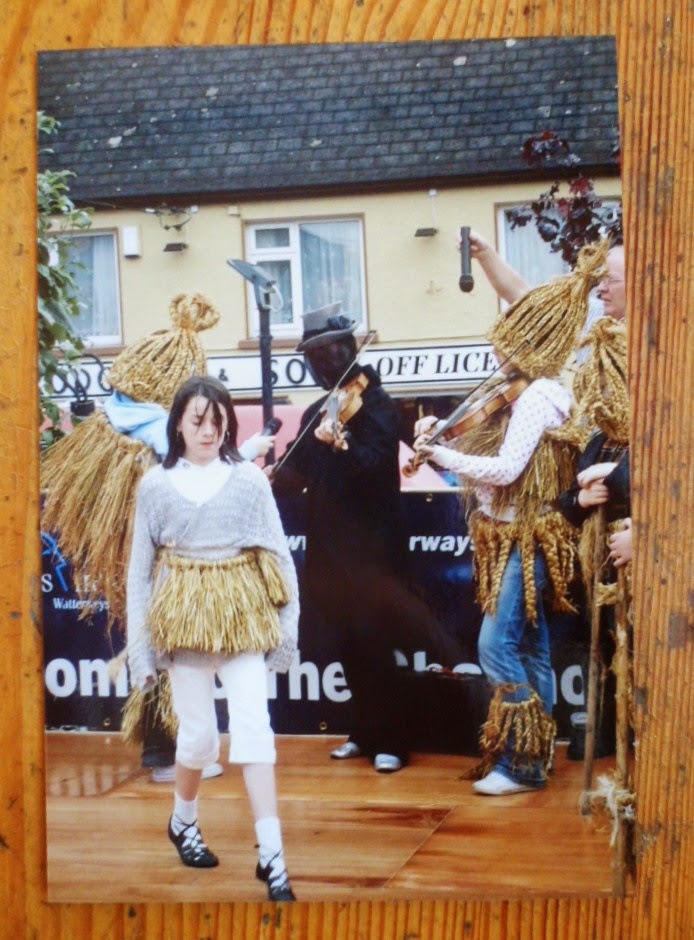The lineage of the strange Doctor with rejuvenating
powers as a character in English Drama goes back to the Doctor in Mummer Plays.
These pagan plays or pageants were performed to mark seasonal changes at summer and
winter Solstice, the August Harvest, the Spring fertility rites of May, and
Twelfth Night New Year festival of “misrule”. They involved spectacle and
magic, masks and mayhem, music and dancing, with audience participation to the
point of inducing an altered state of ecstasy. As they marked the passing of
the year they also marked the life stages of a hero figure who faced a similar
journey involving contest or challenge, courtship and marriage, sacrifice and
resurrection as a risen god ready to repeat the whole process again in a cycle.
Akin to the mystery cult rites of Dionysus, Pan, Attis, Osiris and Orpheus,
they survived by morphing into the medieval “mystery plays” of Christian
Europe, firmly established and performing in manor houses or market squares.
Robin Hood and The Doctor are both heroic characters in these
early dramas and part of our inherited psyche, so it seems right they were brought together again in the “Robot
of Sherwood” episode of "Doctor Who", series 8. By the 15th Century it was
customary to perform Robin of Sherwood plays in May as part of the seasonal
spring fertility celebrations. Robin was the traditional hero, his men were in
the Lincoln Green clothing of Spring. Robin has a contest with Jack the Potter,
and Maid Marion is a later love-interest addition. Only a fragment of this play
survives.
The Doctor appears in the St Stephen Day pageants of St
George. There are many variations of this, but basically a “Bessy” clown figure
in strange costume opens the event, followed by a ritualised elaborate sword
dance based on 6 dancers forming a hexagon, perhaps sacrificial. Father Christmas
(not santa but old Father Time) calls everyone to order as master of
ceremonies. St George fights a Turkish knight, a King and a Dragon and each
time the foe dies Father Christmas calls on The Doctor to save them. The Doctor
carries his black bag of tricks and says he can cure everything except the love
sickness. Every time there is a fight or dual, the healing doctor rejuvenates
them and says, “rise up and fight again”. After the third rejuvenation Father Christmas
appears again to end the play.
(see the importance of three to many fairy stories and folk tales,including Indian Upanishads, later assimilated into concept of the Trinity. Also see entry on this blog,
(see the importance of three to many fairy stories and folk tales,including Indian Upanishads, later assimilated into concept of the Trinity. Also see entry on this blog,
So Father Christmas appears with The Doctor long before
the 2014 Christmas Special of Doctor Who! Interesting that the Capaldi Doctor is dressed in black too.
These Mummer plays are still performed in Ireland today
with “straw boys” in ominous costume, promoting fear and laughter together. They
arrive out of nowhere as ordinary people, get changed on the spot, play music
and dance, perform their play in strange archaic verse, invite the local
villagers to dance, then undress and leave. Here are photos from one of those occasions.,
performed for locals, not tourists.
Opening dance with strawboys and "Bessy"
Parade of actors playing music
Doctor character in black
Doctor resurrecting the Knight
Doctor with his bag of tricks
Straw boy making noise to scare the devils away
Red devil as small boy






